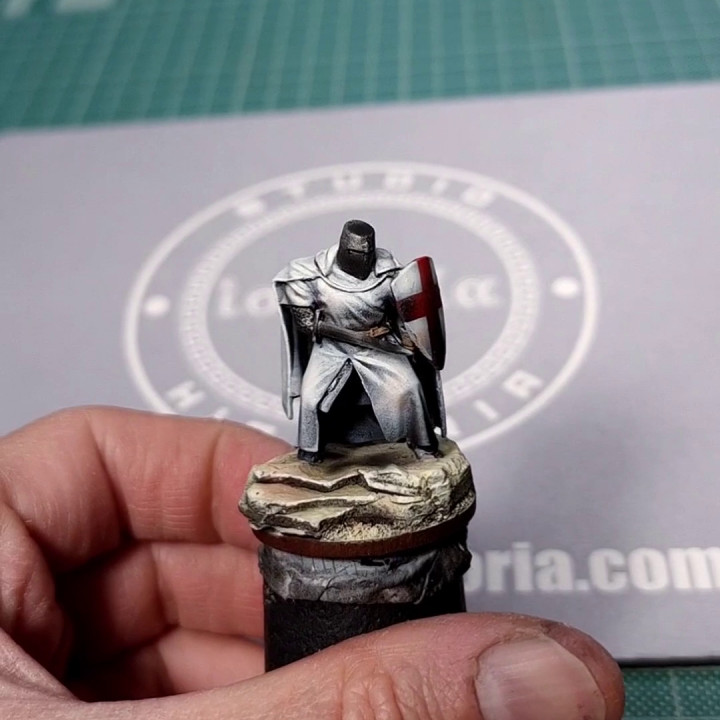
13th century - Teutonic Knights on foot - x 10
myminifactory
This kit includes: 10 separate bodies 3 separate shields All models are supplied both Pre-Supported and Unsupported in 28mm scale STLs and LYS files. - 13th century Teutonic Knights from the time of the Prussian Crusade - The Prussian Crusade, which spanned much of the 13th century, served as the backdrop for the Teutonic Knights' ambitions: the campaign, marked by oppression, the seizure of lands, and the establishment of the Monastic State of the Teutonic Knights, stands as a dark chapter in the annals of medieval European history and religious conflict. Clad in chainmail and great helms and wielding swords, axes and shields, these knights personified a blend of religious devotion and territorial ambition. During the Prussian Crusade in the 13th century, a Teutonic Knight's equipment featured chainmail as their primary form of armor. They donned a chainmail hauberk, a knee-length shirt made of countless small metal rings woven together. A chainmail coif, covering the head and neck, completed the ensemble. Beneath their mail, knights often wore padded aketons. The aketon absorbed blows, while the chainmail stopped the cutting action of metal. They wore enclosed helms and great helms, encasing the enire head and face. They wielded swords but often carried maces or axes as secondary weapons. To further protect themselves in battle, these knights carried kite shields, often emblazoned with the Teutonic Order's distinctive black cross. These shields served both as defensive tools and symbols of their allegiance to the Order and their faith. Here they are depicted using smaller kite shields, to show the transition that led to the emergence of the heater shield in the late 13th century. All teutonic brethren were ordered to dress in a humble and sober fashion, so here they are depicted with long sleeved surcoats, to cover as much of their armor as possible. The Brother Knights also had to wear white mantles as a sign of knighthood. During the Baltic Crusades, most of the combat took place within a region characterized by deciduous forests, heathland, and marshes. These Baltic forests, with their thick underbrush, differed significantly from the more open coniferous forests found further north. In the heart of this landscape lay the upper Niemen, Vilya, and Dvina rivers, where the Lithuanians and their recently subjugated Russian subjects cultivated enough land to sustain a sizable population. Yet, they still preserved a swath of untouched forest stretching over 150 kilometers (93 miles) wide, serving as a natural buffer between themselves and the Teutonic Knights in Prussia and Livonia. Surprisingly, it wasn't the trees themselves that posed the primary obstacle; rather, it was the dense undergrowth, marshes, and numerous waterways that truly impeded the movement of military forces. That's why, during the crusade, the knights were often forced to abandon their horses and fight on foot.
With this file you will be able to print 13th century - Teutonic Knights on foot - x 10 with your 3D printer. Click on the button and save the file on your computer to work, edit or customize your design. You can also find more 3D designs for printers on 13th century - Teutonic Knights on foot - x 10.
